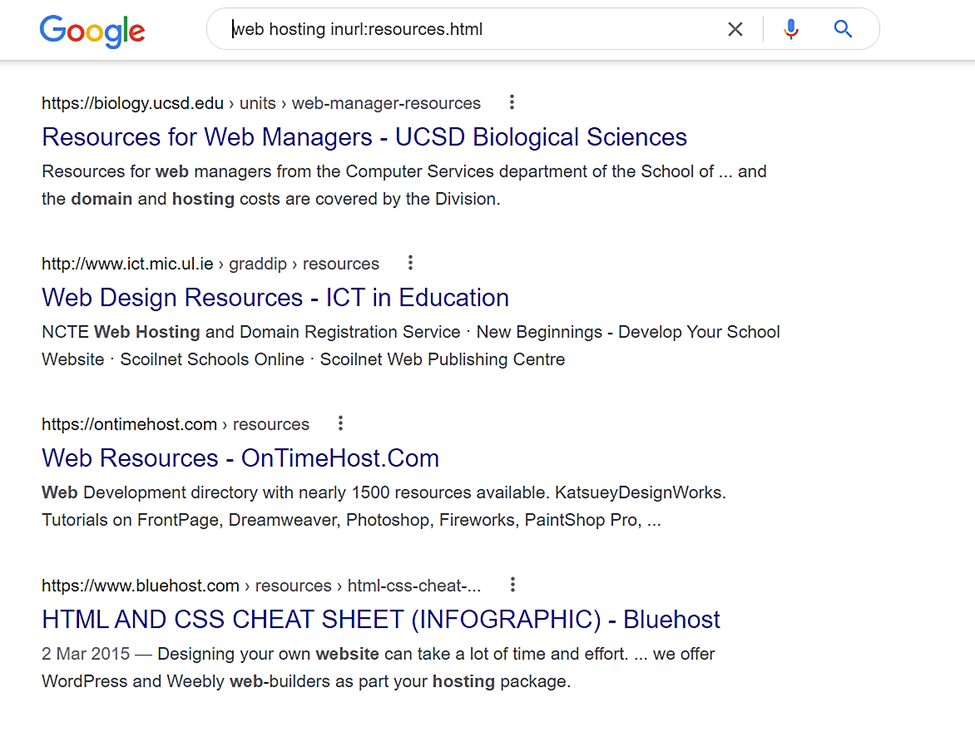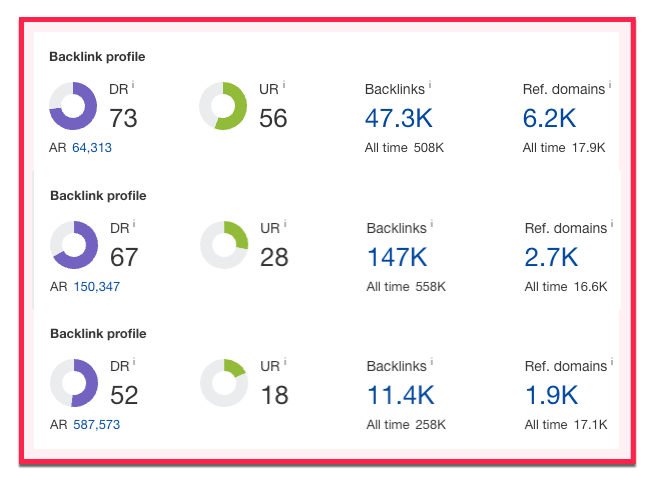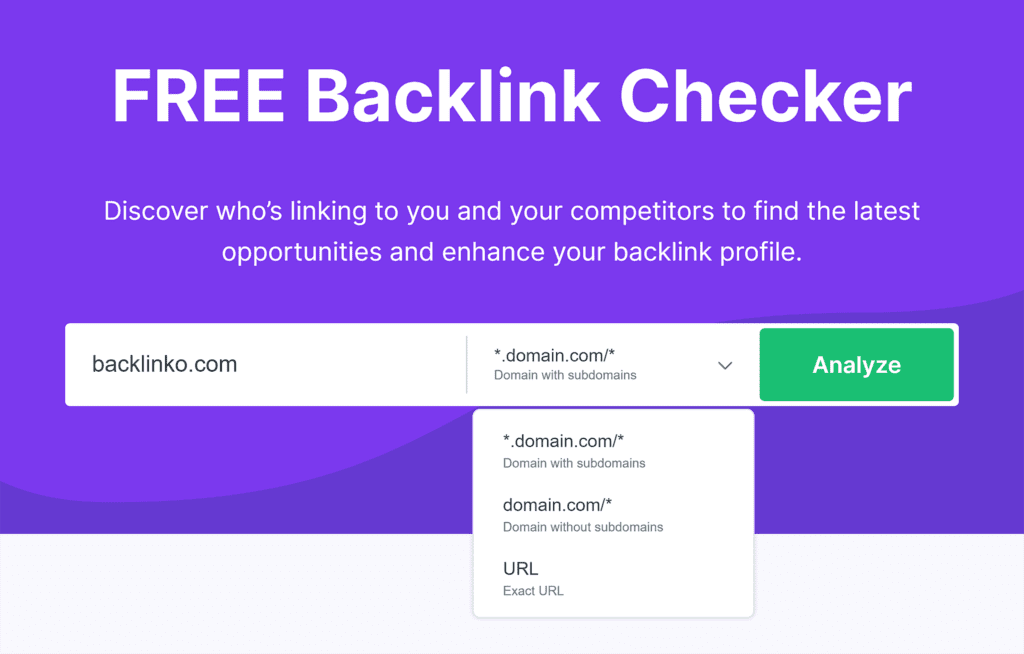Easy Backlinks: 7 Ways To Get Them

Is there such a thing as easy backlinks in a white hat link building strategy?
If you pose the question to SEO pundits, many will tell you that Google’s continued emphasis on quality over quantity is making things particularly difficult for link builders.
The search engine now has these Webmaster Guidelines that prohibit websites from engaging in any scheme meant to build easy backlinks. Otherwise, its advanced algorithm updates are capable of detecting spammy links set up by violators.
There’s no denying that these measures are indeed helping Google protect the sanctity of its SERPs. But, on the flip side, it turns out that they’ve also transformed link building into a whole new ball game.
So challenging have the campaign become, in fact, that 41% of companies are now describing link building as the most difficult part of SEO. And that’s not all. It’s seemingly even getting more exclusive, as only 25% of the blogs today have managed to gain backlinks.
Tell you what, though. You don’t have to break your back chasing new backlinks. Despite Google’s intensified war on link schemes, there are still multiple easy backlinks that you could safely use to finesse your way to the top of the search rankings.
This ultimate guide provides a comprehensive step by step breakdown of seven proven methods to include in your SEO strategy. And, for the sake of clarity, we’ll begin with the basics.
What Are Easy Backlinks?
Easy backlinks are all the external inbound links that you manage to gain for free without much effort.
You see, the problem with traditional white hat techniques is, they’re pretty resource-intensive. If you hope to build high-quality backlinks, you’ll be forced to dedicate a lot of time and money to the whole campaign.
Consider guest blogging, for instance. The initial prospecting process itself will probably take days or weeks, before you finally manage to zero in on relevant publishers in your industry.
Then comes the most challenging bit – you have to creatively come up with a captivating guest post pitch, and then cross your fingers that the publishing editors will read your emails. A survey by Backlinko found out that only 8.5% of such outreach emails ever get a response – meaning that the odds here will always be stacked against you,
It doesn’t get any easier with paid link opportunities.
If, by a stroke of luck, your pitch sails through, expect to pay at least $361.44 per link. A high-quality one could cost even more, as publishers with a DA of 60 and above have been shown to charge upwards of $600 for each backlink.

When it comes to easy backlinks, however, you get the chance to set up white hat inbound links without all that hassle. The link building strategies are quick, free, and non-technical.
That means besides money, you won’t need any specialized SEO skills to build new links. Even beginners can as well leverage them to elevate the status of their new website across various search engines.
But, make no mistake about it. The term “Easy” doesn’t denote throwing caution to the wind. Although this form of link building might seem a bit laid-back, Google’s quality guidelines still apply.
If you, otherwise, go overboard with your optimization, Google Penguin might flag the unnatural link profile – which would then lead to heavy penalties for your website.
So, you might want to proceed with the same caution as traditional link building. All easy backlinks should be placed in a contextual manner that appears completely natural.
What’s more, they ought to be used sparingly across an extensive range of referring domains. If you, instead, choose to repeatedly gain easy backlinks from the same sources – especially within a short period of time – you might come off as a spammy black hat practitioner.
As such, it’s safe to say that there’s no such thing as a 100% guaranteed easy backlink. While the link opportunities here might be readily available, you still have to approach them calculatedly.
Also, just like traditional link building, easy backlinking might take some time to generate results. Give yourself, on average, at least ten weeks or so to register an improvement on the SERP rankings.
For the best link building benefits, you might want to run the campaign alongside other backlinking techniques. Easy backlinks have been shown to be most impactful when they come in to supplement the traditional link building methods. Hence, they should not be viewed as replacements or alternatives.
7 Proven Ways To Get Easy Backlinks For SEO
#1. Transform unlinked brand mentions
If you’ve been on the interwebs for a decent amount of time, you’ve probably garnered a fair amount of brand mentions from other websites.
Now, by “brand mentions”, we mean all those instances in which the name of your website or company has been featured on third-party posts. You’ll find that, whereas some of the publishers are courteous enough to hyperlink the brand mentions accordingly, many have a tendency of leaving the brand mentions unlinked.
John Mueller, the Senior Webmaster Trends Analyst at Google, terms those unlinked brand mentions as “implied links”. That means that although the search engine will pick them up, they don’t necessarily influence the PageRank algorithm.
Google’s 2014 patent filing additionally clarifies that implied links are just referencing citations. Unlike express links, they do not pass on link juice that would influence search rankings. Hence, you can only count on them for brand awareness and visibility.
This is something that you can easily change by reaching out to the publishers of your unlinked brand mentions. Chances are, they possibly wouldn’t need a lot of convincing to add your backlinks to the brand mentions.
That slight adjustment will immediately convert the brand mentions into express links, consequently earning you the much-needed link equity. This process is one of the simplest ways to secure easy backlinks for SEO, leveraging existing mentions to boost your site’s authority.
The exercise itself should be approached as follows:
- For starters, you ought to point out the instances where your brand has been mentioned without proper link attribution.
- To save yourself the trouble of doing it manually, you might want to bring in one of the specialized SEO tools with brand monitoring capabilities. We’re talking about the likes SEMrush, Ahrefs, and BuzzSumo. Whichever you pick, you should be able to accurately track both linked and unlinked mentions of your brand across the web.
- On SEMrush, for instance, you can access the functionality via the “Brand Monitoring” option on the menu tab.
- Once you land on the page, you’ll be required to set up the monitoring campaign before accessing the analytics. SEMrush allows you to specify the brand name to track, the region to monitor, as well as any words you’d like to include or exclude.

Setting up your brand monitoring campaign on SEMrush.
- When the alerts start streaming in, you can sort them out to separate the linked brand mentions from the unlinked ones. SEMrush offers the appropriate filters as part of the tool.
- You can then proceed to reach out to the respective publishers via email. Each proposal should be thoughtfully composed to show appreciation, identify the anomaly and point out your preferred target URL. Otherwise, whenever you fail to find a relevant resource on your site, you could direct the publishers to link to the homepage instead.
#2. Become a source on HARO
Another popular source of easy backlinks is HARO, which stands for Help A Reporter Out. This special initiative was created to link journalists up with relevant field experts, from whom they’d get credible quotes to run in their stories.
The press sees it as an easy way of digging up information that would verify their stories. Then since the expert contributions are typically published with attributions to their sources, webmasters view HARO as a hunting ground for link opportunities. So, you could say that it’s a win-win situation for both parties.
This whole thing is facilitated by HelpAReporterOut.com, a digital platform that hosts both journalists and sources. Already, more than 75,000 journalists are using it to reach over one million prospective news sources.
And by “journalists”, we mean all levels of reporters – from small-time bloggers to representatives of globally renowned media publications. You’ll bump into journalist queries from even the likes of Wall Street Journal, The New York Times, Reuters, Fox News, Time, and ABC News.
Here’s how you get to convert them into high-quality rankings:
- To connect with the journalists, you first have to sign up as a source on helpareporterout.com. The platform will set you up with a user profile, on which you ought to specify your specific areas of interest – travel, sports, entertainment and media, lifestyle and fitness, biotech and healthcare, business and finance, etc.

The various industry categories you’ll find on HARO.
- When your account is up and running, you’ll begin receiving journalist queries up to three times a day, Monday through Friday. HARO normally compiles and distributes them via email, while premium users get the privilege of receiving even text alerts.
- From the numerous queries relayed to your mailbox, you’re supposed to pick out the ones that resonate best with you. This is where you pre-qualify them in three consecutive stages.
- The first stage identifies queries aligned with your expertise, after which you should review the requirements attached to each query. The ones whose conditions you perfectly meet could then proceed to the third and final stage, where you run DA checks on the publishing sites.
- Moz or Loganix’s Free DA Checker can help you with that. Simply pull the media outlet’s URL from each of the pre-qualified queries, and then run it through your preferred assessment tool. This should reveal their domain authority, at which point you could choose to pursue link opportunities of the highest quality.

Using Loganix DA Checker to analyze and compare multiple sites at once.
- You can then go ahead and respond to your selected queries with thoughtful pitches. Journalists typically expect a concise answer, which should be accompanied by an author bio, plus links to the relevant site assets. At least then, they’ll know the ideal backlinks to include in their publications.
While you’re at it, keep in mind that you won’t be the only one chasing the easy backlinks. HARO has a million sources battling each other for 50,000 link opportunities per year, and the competition gets even fiercer on the rare occasions when queries come in from high DA publishers.
#3. Salvage broken links
Link building is not always about setting up new backlinks from scratch. It sometimes pays to take a step back and approach things from the opposite direction. This is where you salvage existing links in the hope of winning over a couple of easy backlinks.
One particularly effective tactic you could engage when it comes to that is broken link building. You just need to find links that point to your competitors’ invalid URLs, and then get the publishers to replace them with backlinks to valid pages on your own site.
As you’ll notice, it doesn’t even take much to convince the affected referring domains. They are already aware of the negative effects that broken outbound links might have on their search engine rankings and overall web reputation. As such, many of them are bound to respond positively if you offer a solid alternative to link to.
The challenge, of course, is finding relevant broken links in the first place. But then thanks to SEO tools, there are several different data-driven approaches that you could take.
- You could try auditing the backlink profiles of your top competitors. The best candidates for this type of analysis are those highly popular websites on your industry’s backlink leaderboard.
- You should, in particular, focus on the ones whose content is very similar to yours. To identify them, consider running a Google search on your target keywords. You can then take the best ranking URLs as your top competitors, whose broken inbound links would potentially translate into very easy backlinks for your site.
- The tool to use here is SEMrush’s Backlink Analytics, as it’s capable of performing a full check on the backlink profile of each of those URLs. Just run a search on each domain, and then proceed to the “Indexed Pages” tab.
- At the top of the metrics table, you’ll see a “Broken Pages” checkbox. Ticking this will immediately reveal a list of the competitor pages with broken inbound links.

Using SEMrush Backlink Analytics to find pages with broken links.
Alternatively, you could approach the broken link building campaign from your target referring pages.
- Start by establishing the specific high authority pages on which you’d like to have your backlinks published. A site with an insightful piece on digital marketing could, for instance, refer to Wikipedia’s article on the same.
- You should then run the target publisher’s URL through the Ahrefs Broken Link Checker. This will subsequently point out the broken outbound links from the referring page, along with its corresponding list of broken inbound links.
- A quick analysis of the same Wikipedia article, for instance, uncovered two broken outbound links – each of which industry bloggers could capitalize on for easy backlinks.

Using Ahrefs to discover broken outbound links on a target referring domain.
#4. Set up a free web-based tool
While creating content about great tools might get you a fair amount of inbound links, you’re bound to attract even more attention when you offer the tools.
Think about it. Articles on tool-related subjects – with headlines like “the best tools..”, “top free tools”, etc – are popular across every industry because publishers and audiences are always on the lookout for resourceful tools.
As such, you’ll find that tool providers usually end up being the ultimate beneficiaries of the resultant traction and cumulative link equity. All these articles, for instance, publish easy backlinks that sequentially pass on link juice to the tool providers.
You too could join this league of beneficiaries by setting up a free web-based tool on your site.
Now, don’t get us wrong. We’re not suggesting you change your business model. And no – you don’t have to go all out and invest thousands of dollars in software development.
The goal here is not to build the best in class or generate profit from the tool. You just need a basic tool that’ll keep earning you just enough easy backlinks to improve the Google search engine rankings.
To find the perfect one:
- Perform organic SEO research to get a good idea of the type of tools people are searching for in your industry.
- SEMrush’s Keyword Magic Tool can help you with that. Just add a term like “tool”, “generator”, “calculator”, or “templates” to your target keywords and then review the search trends.

Checking tool ideas through the SEMrush Keyword Magic Tool.
- You can then pick out the simplest tools with the highest search volume, a good number of backlinks, and strong organic traffic patterns.
Take Loganix as a case study. As an SEO agency, we had to find a simple tool that would be appreciated by the digital marketing world to the point of winning us easy backlinks while, at the same time, generating leads.
And that’s how we came up with the whole idea of a Free Domain Authority Checker. The development process itself was not that complicated, as we built it to ride on the databases of existing DA checkers.
The result was phenomenal. Thanks to the value that users have been getting from the tool, its webpage has, in one year, gained 234 backlinks from 121 referring domains and counting.
We used internal links to create traction, before external publishers eventually caught up and then began featuring the handy tool on their posts.

The number of easy backlinks gained in one year by Loganix’s DA Checker.
#5. Establish yourself in directories, forums, and social media
Despite Google’s representatives continuously dropping mixed sentiments on the relevance of forum and directory links in SEO, our link building campaigns have confirmed time after time again that these types of backlinks are far from dying.
Although they don’t pack as much power as dofollow links, their nofollow status still influences search engines – especially when it comes to local SEO.
Google itself admits that while nofollow links do not necessarily pass on link juice, its algorithms perceive them as hints on what to include and exclude from Google search.
And that’s not all. The influence of directory links happens to be even more pronounced in local SEO. Building those easy backlinks on relevant directories will gradually elevate the profile of your business on local search – consequently bringing in more customers and sales.
You should, in particular, prioritize the following directories in your local search optimization and link building campaigns:

Building a business profile on Google.
Google uses such links and info to piece together relevant results for local queries, which as matter of fact, happen to make up 46% of all the searches across its platforms.
That often marks the beginning of the customer journey. And thanks to Google using the directory links and information to point users towards relevant businesses, 78% of the search instances usually lead to people buying locally.
While you set up your profiles on all the popular directories, you might also want to rally audiences through other forms of nofollow backlinks. This is where social media links truly shine, along with backlinks on forums and blog comment sections.
A word of caution, though. Don’t get too carried away by the unusually easy backlinks. Your link building campaign should be centered around relevant niches, while the anchor text itself ought to be contextual to the subject matter.
Google is perfectly aware that directory, social media, and forum links are particularly popular with black hat spammers. So, expect its algorithms to be on the lookout for any poorly structured network of links.
#6. Perform backlink gap analysis
In your quest for easy backlinks, you could also try to draw hints from your competitors’ link profiles, before ultimately capitalizing on the most promising ones. This would substantially boost your efforts in catching up with the industry leaders dominating the top rankings
Now, there are multiple methods and resources that you could use to analyze your competitors’ backlinks. By understanding their strategies, you can identify easy backlinks for SEO that you might have missed, allowing you to fill gaps and strengthen your own backlink profile.
Take, for instance, the backlink checkers on Moz and Ahrefs. Both are capable of uncovering your competitors’ backlink profiles, from where you should be able to identify some of the link opportunities that you’re potentially missing out on.
That’s would be a great start. But, for increased precision, you might want to perform what we call backlink gap analysis.
This is a much deeper assessment, as it brings together multiple competitors and then collectively compares their link profiles with yours. As a result, you get to conclusively find out the referring domains that are linking to your competitors but not you.
The revelation could then serve as a template for finding prospective partners who’d potentially help you build backlinks. Their partnership with multiple players in your industry is a clear sign that they’d very much be open to linking to additional relevant sources.
Here’s a basic tutorial for the whole procedure:
- For extensive backlink gap analysis, consider leveraging SEMrush, the all-in-one SEO intelligence toolkit. Its Backlink Gap Analysis tool is capable of comparing up to five competitor sites at once, from whom it generates metrics on the existing backlink gaps.
- You should be able to view even a segmented breakdown of all the core opportunities that you’re missing out on. These are the chief prospects you should prioritize in your link building campaign.
- The segmentation and insights here have additionally been organized accordingly for strategic planning. You’ll find a tab for the Best Opportunities, Weak Opportunities, Strong Opportunities, Shared Opportunities, and Unique Opportunities.

Performing backlink gap analysis with SEMrush.
- Your attention should fundamentally be directed to the list of the Best Opportunities, as it outlines the referring domains that point to all of your competitors but not you. That means it won’t take much to convince them to work with you too.
- But, before you pursue the easy backlinks, it’s always advisable to confirm the domain authority of each referring domain. You’ll find the metrics under the “Authority Score” column of the backlink gap analysis report.
- At least with that, you’ll have a good idea of the order to follow in your outreach campaign. Keep in mind, though, that while you could get some of the referring domains to add your backlinks to their existing articles, others might request you to submit a guest post.
#7. Get featured on resource pages and link roundups
Easy backlinks also come in the form of curated lists like resource pages and link roundups.
Resource pages are highly informative web pages that curate lists of links to insightful guides on a specific topic. Hence, this is where people come to find out where to sample resourceful assets, all for the sake of expanding their knowledge in a niche of interest.
You’ll find backlinks to relevant articles, images, videos, infographics, white papers, journals, research reports, etc.
Consider, for instance, this collection of air travel resource pages on Google search. They provide links to external sites providing transport information, passport renewal details, airport codes, times and prices of flights, hospitality industry infographics, etc.

Resource pages on Google search.
Link roundups, on the other hand, are reserved exclusively for web content. They provide curated lists of outbound links to some of the most outstanding articles on a selected subject. You’ll find them compiled as monthly, weekly, or daily link roundups.
Check out this weekly link roundup, for example. It highlights the selected week’s best-performing articles on marketing and WordPress web design. These were sampled from different bloggers across a variety of external sources.

An example of a weekly link roundup.
Such curated lists are popular in the link building community because of the ease with which you get to create quality backlinks. You only need to reach out to the publishers with links to a relevant piece of content, and they’ll proceed to feature the backlinks accordingly.
It’s because of this simplicity that resource page link building is ranked as the second most popular backlink strategy after guest posts. About 56% of SEO professionals rely on them for easy backlinks.
If you hope to join them, you ought to familiarize yourself with this basic SEO procedure:
- The first requirement is finding the most appropriate resource pages or link roundups for the content on your site.
- You could turn to Google search for pointers on the most authoritative link roundups and resource pages in your subject field. The trick is to enter the right search operators and then leave the ranking factors to execute the request.
- If you’re looking for resource pages, for example, you could type in the operators in any of the following formats:
- “Your focus keyword here” inurl:resources intitle:resources
- “Your focus keyword here” inurl:.com/resources
- “Your focus keyword here” intitle:links inurl: resources.html
- “Your focus keyword here” intitle:resources inurl:links.html
- Imagine, for instance, that you’re seeking out resource pages on web hosting. Your Google search operators would be something like:
- Web hosting inurl:resources intitle:resources
- Web hosting inurl:.com/resources
- Web hosting intitle:links inurl: resources.html
- “Web hosting intitle:resources inurl:links.html
- This is what you’d subsequently get on the first page of Google’s search results:

A snippet of the search results for web hosting resource pages.
- Link roundups, on the other hand, are best discovered through search operators like:
- “Keyword” + best blogs of the week
- “Keyword” + best posts of the month
- “Keyword” + intitle:roundup
- “Keyword” + inurl:roundup
- “Keyword” + “weekly link”
- “Keyword” + “weekly roundup”
- “Keyword” + “link roundup”
- For example, in the case of web hosting, you’d enter search operators along the lines of:
- “Web hosting” + best blogs of the week
- “Web hosting” + best posts of the month
- “Web hosting” + intitle:roundup
- “Web hosting” + inurl:roundup
- “Web hosting” + “weekly link”
- “Web hosting” + “weekly roundup”
- “Web hosting” + “link roundup”
- Here’s a snippet of the results we got:

A snippet of Google search results on running a query for link roundups.
- Whichever you happen to be targeting for easy backlinks – link roundups or resource pages – the next step in your link building campaign would be vetting the prospective platforms.
- This is where you run their URLs through Moz, Ahrefs, Loganix, or SEMrush to appraise their backlink profile, internal links, domain authority, and overall SEO value.
- Once you finally identify high authority prospects, you can go ahead and send in your pitches through a series of well-thought-out outreach emails.
The backlinks you are looking for 👀

Loganix manually-build in-content links from niche-specific sites with at least 1,000 organic visits/mo, stable histories, and strong metrics. We call them authority links.
Over To You – Make Your Easy Backlinks Even Easier
Although there’s no guaranteed easy backlink, at least these seven strategies come close to giving you the privilege.
You won’t need a lot of resources or a huge marketing budget to link brand mentions , salvage broken links, establish HARO links, develop a free basic web-based tool, perform backlink gap analysis, chase features on link roundups and resource pages, plus distribute nofollow links across directories, forums, and social media.
Here’s the thing, though – if we’re being honest, this entire link building campaign is not quite as effortless as you’d have probably hoped. Although the tasks are lighter than traditional strategies, you still need finesse, specialized tools, and a couple of outreach messages to get the best out of your easy backlinks.
And even after you manage to set them up, you can’t afford to let your guard down by suspending the campaigns every now and then. Link building is a continuous process if you hope to keep growing and stay ahead of your competitors.
Now, when you consider that along with all the complications that come with Google’s ever-morphing search algorithms and the exceedingly competitive SEO environment, it wouldn’t be a good idea to hold off traditional link building while you chase easy backlinks.
Easy backlink strategies should, instead, run in tandem with traditional link building. Otherwise, the gap between you and your top competitors will only keep widening. You can bet they’re probably already working their socks off with every possible link building strategy they can get their hands on.
But, that doesn’t make them unbeatable. Even a new website has a fairly good chance of catching up with industry veterans through well-calculated digital marketing campaigns.
In your case, for instance, you have the chance to make things even easier despite the ever-increasing campaign needs. The trick is simply outsourcing your entire link building campaign to the real professionals at Loganix.
We offer customized all-inclusive SEO packages – complete with all types of link building strategies, content marketing, local search optimization, backlink gap analysis, keyword gap analysis, link audits, SEO audits, etc.
Our well-tested and proven strategies will alleviate your digital marketing load while accelerating SEO growth. Call us even right now to see it all in action on your website.
Hand off the toughest tasks in SEO, PPC, and content without compromising quality




